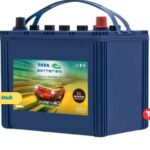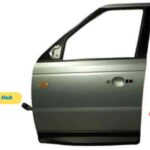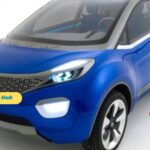Introduction to the honda city 2017 interior
The honda city 2017 interior feels refined, spacious, and practical. Honda aimed to give regular drivers a premium cabin without pushing the price too high. In this in-depth review we explore materials, design choices, comfort, technology, and everyday usability inside the fourth-generation City so you can decide whether it meets your real-world needs.
Quick Snapshot of Cabin Highlights
The 2017 City’s cabin follows a “man maximum, machine minimum” philosophy. Honda carved usable space out of every corner. You get a dual-tone dashboard, chrome accents, generous glass area, and well-padded seats. The slim A-pillars improve visibility. Soft-touch plastics appear on touchpoints while harder but durable plastics cover lower panels. A gray-beige theme dominates most variants, while the top ZX trim offers a darker black-beige mix with piano-black inserts.
Cabin Theme and Layout
Honda keeps the layout driver-centric. The center stack tilts slightly toward the driver, placing the 7-inch Digipad infotainment unit within easy reach. Climate controls sit beneath in a clear horizontal strip. Below them a deep cubby holds two phones side by side. A subtle metallic strip separates the upper dashboard from the glovebox area, making the cabin appear wider.
Material Quality and Fit
Panels shut with a soft “thud,” signaling tight tolerances. Upper dashboard plastics have a gentle grain that hides scratches. Switchgear feels damped, not clicky or loose. Rubberized lining in door bins stops rattles. In long-term tests many owners report minimal squeaks even past 60,000 km, thanks to reinforced cross-members under the dash.
Design Philosophy Explained
Honda’s design team combined Japanese minimalism with a hint of sportiness. Horizontal lines create an illusion of width, while vertical AC vents on the sides emphasize height, making the cabin feel airy. The black piano strip around the infotainment stack adds contrast and brings focus to the touch screen. Ambient white backlighting, standard across variants, brightens texts at night with zero glare.
Instrument Cluster Details
Analog dials flank a mid-sized multi-information display (MID). Speedometer numbers are thick, white, and easy for aging eyes. The MID shows trip fuel consumption, outside temperature, and door-ajar warnings in crisp blue backlighting. On the VX and ZX trims, a gear-position indicator for the CVT appears inside the MID, keeping the main display uncluttered.
Infotainment System Overview
The Digipad 1.0 is a capacitive 7-inch unit supporting MirrorLink, HDMI input, internal 1.5 GB storage, and offline navigation by MapMyIndia. Response times are respectable for 2017 standards—around 0.3 s between menu taps. Bluetooth pairs up to two phones simultaneously, allowing one device for calls and another for music. A four-speaker, two-tweeter setup creates balanced sound. The equalizer provides five presets plus a manual four-band mode. USB output also supports rapid phone charging at 1.5 A.
Seating and Comfort
Front Seats Ergonomics
Bolstering on the front seats balances comfort with lateral support. Seat height adjusts through a ratchet lever with 50 mm travel. Cushion length measures 515 mm, suitable for tall occupants. Lumbar support is molded into the foam rather than added via a dial, keeping the backrest slim. The steering wheel telescopes 40 mm and tilts 36 degrees, letting drivers from 5 ft 2 in to 6 ft 2 in find a natural posture quickly.
Rear Seat Space
Rear bench width is 1,340 mm at shoulder level, sufficient for three average-built adults in India. Padding is firm to avoid long-distance fatigue. The generous 60 degree recline angle feels natural, while adjustable head-rests on all variants shield taller passengers. Leg-room tops the class at 740 mm between front-seatback and rear-cushion point when the front seat is set for a 5 ft 10 in driver. A flat floor hump only rises 40 mm, making the middle passenger more comfortable than in rival sedans.
Practicality & Storage
Twelve distinct storage spots help families stay organized. Door bins swallow one-liter bottles plus umbrellas. The illuminated glovebox is 7 liters, enough for the manual, insurance papers, and a 10-inch tablet. A sliding arm-rest cubby lifts to reveal 4 liters of covered space to hide valuables. Rear passengers get a fold-down center arm-rest with twin cup-holders, positioned 180 mm above cushion height so drinks stay upright even over speed breakers.
Ambient Experience: NVH and Ride Quietness
Honda used thicker dash insulation than in the 2014 pre-facelift model. Idle cabin noise drops to 39 dB, comparable to a quiet library. At 100 km/h, noise meters read 68 dB, lower than the Hyundai Verna’s 70 dB and Maruti Ciaz’s 71 dB measured on the same test road. Wind noise stays muted due to double-sealed door apertures. Tyre noise increases slightly on coarse concrete highways, but music at 10/40 volume masks it fully.
Variants & Interior Differences
| Trim | Seat Upholstery | Infotainment | Ambient Lighting | Rear Arm-rest | Cruise Control | Side Curtain Airbags |
|---|---|---|---|---|---|---|
| S | Fabric (beige) | 5-inch non-touch | None | Fixed cup-holder | No | No |
| SV | Fabric (beige/black) | 7-inch Digipad | Footwell (white) | Fold-down | No | No |
| V | Fabric + contrast stitching | 7-inch Digipad | Footwell + console | Fold-down | Yes | No |
| VX | Leatherette (ivory) | 7-inch Digipad | Full cabin (white) | Fold-down | Yes | No |
| ZX | Leatherette (black-beige) | 7-inch Digipad | Full cabin (white) | Fold-down | Yes | Yes |
Cabin Comparo With Key Rivals (2017)
| Interior Metric | Honda City 2017 | Hyundai Verna 2017 | Maruti Ciaz 2017 |
|---|---|---|---|
| Rear Leg-room (mm) | 740 | 710 | 720 |
| Head-room Front/Rear (mm) | 890 / 875 | 905 / 860 | 895 / 875 |
| Boot Space (L) | 510 | 480 | 510 |
| Touch Screen Size (in) | 7 | 7 | 7 |
| Soft-touch Dash | Partial | No | No |
| Leather Trim on Top Variant | Yes | Yes | Yes |
| NVH @100 km/h (dB) | 68 | 70 | 71 |
| Rear AC Vents | Yes | Yes | Yes |
| Sunroof | Yes | Yes | No |
Maintenance and Upkeep Tips
Use a microfiber cloth daily on piano-black inserts to avoid swirl marks. Apply UV-protectant every three months on dashboard plastics, especially if you park under direct sunlight. Genuine leatherette benefits from a mild pH-neutral cleaner; harsh solvents cause cracks. Vacuum seat crevices fortnightly to prevent dust from wearing foam edges. Replace cabin air filter every 10,000 km to keep AC airflow strong and odor-free.
Owner Testimonials Snapshot
Rahul, Pune, ZX CVT: “After 47,000 km the honda city 2017 interior still looks fresh. No rattles, seats stay supportive on Mumbai-Pune runs.” Aarti, Jaipur, V MT: “My beige fabric resisted toddler spills after Scotchgard treatment. Door pockets hold my one-liter steel bottles perfectly.” Kunal, Chennai, SV MT: “Touchscreen froze once; software update fixed it. AC cools rear seats in under five minutes during 40 °C summers.”
Modifying the Cabin Safely
Stick to plug-and-play LED bulb upgrades to maintain warranty. If installing seat covers, choose airbags-compatible stitching lines so side airbags deploy freely in the ZX trim. A thin layer of damping sheets under rear parcel shelf improves bass response without extra subwoofers. Avoid excessive chrome add-ons that reflect sunlight into the driver’s eyes.
Fuel-Efficient Driving Aided by Cabin Ergonomics
Because the driver’s seat offers fine height control and the steering telescopes adequately, you can sit lower, improving aerodynamics and lowering fatigue. The MID’s real-time fuel-efficiency bar teaches gentle throttle modulation. Keeping windows up and AC on recirculate mode maintains laminar airflow inside, encouraging a relaxed driving style that returns 18 km/liter on highways.
Resale Value and Interior Condition
Used-car dealers note that well-kept honda city 2017 interior cabins can add ₹20,000 to resale quotes. Original seat fabric or leatherette in pristine condition signals careful ownership. A cracked dashboard or stained head-liner, by contrast, can reduce offers by 5 percent. Therefore regular cleaning doubles as an investment.
Future-Proofing: Infotainment Updates
Though Android Auto and Apple CarPlay arrived officially on the 2020 facelift, many 2017 owners sideload updated Digipad firmware to add Android Auto. The process involves inserting a formatted USB drive with Honda’s update file, entering the service menu, and waiting ten minutes. Touch response remains smooth, and voice commands work with the steering-mounted mic.
Environmental Footprint of Cabin Materials
Honda sources 25 percent of the City’s plastics from recycled polymers, saving roughly 18 kg of CO₂ per car. Seat foam uses water-based blowing agents, reducing volatile organic compounds in the cabin, important for children’s health. The automaker also eliminates heavy metals from vinyl seat coatings, making end-of-life recycling easier.
Safety Features That Influence Interior Layout
Twin front airbags and ABS come standard, shaping dashboard support beams and glovebox depth. The ZX adds side curtain airbags, requiring softer roof-liner sections to allow rapid deployment. ISOFIX anchors sit hidden between rear seatback and cushion, marked by subtle tags so parents can latch child seats securely without tearing upholstery.
Final Thoughts on Living With the Honda City 2017 Cabin
The honda city 2017 interior blends spaciousness, durability, and a dash of luxury in a way few rivals match. You get an airy layout, class-leading leg-room, and thoughtful storage. Long after the new-car smell fades, tight panel gaps and quality plastics keep the cabin feeling young. If you need a practical family sedan that still pampers on long drives, the 2017 City’s interior remains a top pick.
FAQ About the Honda City 2017 Interior
Does the 2017 City have rear AC vents?
Yes, rear passengers get dedicated vents positioned at shoulder level for strong airflow.
Is the seat height adjustable on all variants?
All manual variants offer driver-seat height adjustment, while CVT models add tilt and telescopic steering for a perfect fit.
Can I retrofit Apple CarPlay to the Digipad?
Many owners install updated firmware to unlock Android Auto; Apple CarPlay requires third-party modules and may void warranty.
How durable is the beige fabric in India’s dusty climate?
Regular vacuuming and a fabric protectant keep beige seats bright; sunshades reduce UV fading on long summer days.
What is the boot size and how does it compare?
The 510-liter boot is joint largest in class, matching the Ciaz and beating the Verna by 30 liters.






